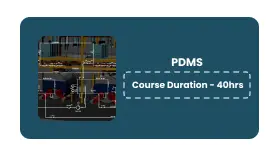Why enroll Redhat Linux
Why enroll for LINUX RHEL 8 course ?
Course Benefits
Duration of Training : 40 hrs
Batch type : weekdays /weekends/ Customized Batches
Mode of Training: Offline / Online / Corporate Training
Projects Given : 2 Projects minimum
Trainer Profile : Experienced Faculty from IT Industry
Projects | Assignment | Scenarios and Used Case Studies
Designations
- ALL COMBO COURSES
- PROGRAMMING COURSES
- NON PROGRAMMING COURSES


Want to become Engineer?


Want to become Engineer?


Want to become Engineer?
WhyTerraform ?
Multi-Cloud Support
Declarative Configuration
Resource Graph
Modularity and Reusability
State Management
Plan and Apply Workflow
Extensibility
About your Terraform Certification Course
Terraform Skills Covered
-
State Management
-
Terraform Modules
-
Dependency Management
-
Terraform CLI
-
Terraform Configuration Language (HCL)
-
Infrastructure as Code (IaC) Principles
-
Resource Provisioning
-
Terraform Providers
-
Terraform Workspaces
-
Terraform Best Practices
Curriculum Designed by Experts
Windows Server 2012 (MCSA) Course Syllabus
After completing this course, students will be able to:
- Install and configure Windows Server 2012.
- Describe Active Directory Domain Services and install a domain controller.
- Create and configure user, group, and computer objects.
- Use Windows PowerShell and other command‐line tools to create and configure AD DS objects.
- Configure IPv4 for simple scenarios.
- Install and configure a DHCP server.
- Install and configure DNS service.
- Configure IPv6 for simple scenarios.
- Configure local storage on a server.
- Create and secure files shares and shared printers.
- Create and manage Group Policy objects.
- Secure Windows Servers by Using Group Policy Objects.
- Implement Server Virtualization with Hyper‐V.
- Windows Server 2012 Overview
- Overview of Windows Server 2012 Management
- Installing Windows Server 2012
- Post‐Installation Configuration of Windows Server 2012
- Introduction to Windows PowerShell
- Overview of AD DS
- Overview of Domain Controllers
- Installing a Domain Controller
- Managing User Accounts
- Managing Group Accounts
- Managing Computer Accounts
- Delegating Administration
- Using Command‐line Tools for Administration
- Using Windows PowerShell for Administration
- Performing Bulk Operations with Windows PowerShell
- Overview of TCP/IP
- Understanding IPv4 Addressing
- Subnetting and Supernetting
- Configuring and Troubleshooting IPv4
- Installing a DHCP Server Role
- Configuring DHCP Scopes
- Managing a DHCP Database
- Securing and Monitoring DHCP
- Name Resolution for Windows Client and Servers
- Installing and Managing a DNS Server
- Managing DNS Zones
- Overview of Storage
- Managing Disks and Volumes
- Implementing Storage Spaces
- Securing Files and Folders
- Protecting Shared Files and Folders Using Shadow Copies
- Configuring Network Printing
- Overview of Group Policy
- Group Policy Processing
After completing this course, students will be able to:
- Implementing a Group Policy Infrastructure
- Managing User Desktops with Group Policy
- Managing User and Service Accounts
- Maintaining Active Directory Domain Services
- Configuring and Troubleshooting DNS
- Configuring and Troubleshooting Remote Access
- Installing, Configuring, and Troubleshooting the Network Policy Server role
- Configuring Encryption and Advanced Auditing
- Monitoring Windows Server 2012
- Implementing Update Management
- Understanding Group Policy
- Implement GPOs
- Manage Group Policy Scope
- Group Policy Processing
- Troubleshooting Policy Application
- Implement Administrative Templates
- Configure Group Policy Preferences
- Manage Software with GPSILab: Managing User Desktops with Group Policy
- Deploying Software Using Group Policy
- Implement Settings Using Group Policy Preferences
- Configuring Folder Redirection
- Create and Administer User Accounts
- Configure User Object Attributes
- Automate User Account Creation
- Configure Managed Service Accounts
- Implementing Virtualized Domain Controllers
- Implementing Read Only Domain Controllers
- Administering AD DS
- Managing the AD DS Database
- Installing the DNS Server Role
- Configuring the DNS Server Role
- Configuring DNS Zones
- Configuring DNS Zone Transfers
- Managing and Troubleshooting DNS
- Configuring Network Access
- Configuring VPN Access
- Overview of Network Policies
- Troubleshooting Routing and Remote Access
- Configuring DirectAccess
- Installing and Configuring a Network Policy Server
- Configuring RADIUS Clients and Servers
- NPS Authentication Methods
- Monitoring and Troubleshooting a Network Policy Server
- Overview of FSRM
- Using FSRM to Manage Quotas, File Screens, and Storage Reports? Implementing Classification Management and File Management Tasks
- DFS Overview
- Configuring DFS Namespaces
- Configuring and Troubleshooting DFS Replication
- Encrypting Network Files with EFS
- Configuring Advanced Auditing
- Overview of WSUS
- Deploying Updates with WSUS
- Monitoring Tools
- Using Performance Monitor
- Monitoring Event Logs
After completing this course, students will be able to:
- Implementing Advanced Network Services
- Implementing Advanced File Services
- Implementing Dynamic Access Control
- Implementing Network Load Balancing
- Implementing Failover Clustering
- Implementing Failover Clustering with Hyper‐V
- Implementing Disaster Recovery
- Implementing Distributed AD DS Deployments
- Implementing AD DS Sites and Replication?
- Implementing AD CS
- Implementing AD RMS
- Implementing AD FS
Implementing Advanced Network Services
This module covers configuring advanced features in DNS and DHCP with Windows Server 2012 as well as covering IP Address management (IPAM).
- Configuring Advanced DHCP Features
- Configuring Advanced DNS Settings
- Implementing IP Address Management
Implementing Advanced File Services
This module will cover learning how to configure and manage iSCSI and BranchCache as well as Implementing Windows 2012 features that optimize storage utilization such as File Server Resource Manager, File classification and Data Deduplication.
- Configuring iSCSI Storage
- Configuring Branch Cache
- Optimizing Storage Usage
Implementing Dynamic Access Control
This module covers planning and implementing Dynamic Access Control (DAC).
- Overview of Dynamic Access Control
- Planning for a Dynamic Access Control Implementation
- Configuring Dynamic Access Control
Implementing Network Load Balancing
This module covers how to plan and implement Network Load Balancing (NLB). It will cover managing and configuring an NLB cluster and validating High Availability for an NLB cluster.
- Network Load Balancing Overview
- Configuring a Network Load Balancing Cluster
- Planning a Network Load Balancing Implementation
Implementing Failover Clustering
This module covers the Failover Clustering features in Windows Server 2012. It will cover how to implementing Failover Cluster, Configuring highly available applications and services on a failover cluster and how to how to maintain Failover Cluster and how to use new maintenance features such as Cluster Aware Updating (CAU). It will also cover how to implement multi‐site failover cluster.
- Overview of Failover Clustering
- Implementing a Failover Cluster
- Configuring Highly‐Available Applications and Services on a Failover Cluster? Maintaining a Failover Cluster
- Implementing a Multi‐Site Failover Cluster
Implementing Failover Clustering with Hyper‐V
This module will cover the options for making virtual machines highly available. It will cover how to implement virtual machines in failover cluster deployed on host, options for moving virtual machine or its storage and Provide high level overview about System Center Virtual Machine Manager (SCVMM) 2012.
- Overview of the Integration of Hyper‐V with Failover Clustering
- Implementing Hyper‐V Virtual Machines on Failover Clusters
- Implementing Hyper‐V Virtual Machine Movement
- Managing Hyper‐V Virtual Environments by Using System Center Virtual Machine Manager
Implementing Disaster Recovery
This module covers considerations that must be included when you are implementing a disaster recovery solution, how to Plan and implement a backup solution for Windows Server 2012, Plan and implement server and data recovery using Windows Server Backup and Microsoft Online Backup.
- Disaster Recovery Overview
- Implementing Windows Server Backup
- Implementing Server and Data Recovery
Implementing Distributed AD DS Deployments
This module will cover the components of a highly complex AD DS deployment such as implementing a distributed AD DS deployment and Configuring AD DS Forest trusts.
- Overview of Distributed AD DS Deployments
- Implementing a Distributed AD DS Deployment
- Configuring AD DS Trusts
Implementing AD DS Sites and Replication
This module covers how replication works in a Windows Server 2012 AD DS environment. It will include configuring AD DS sites in order to optimize AD DS network traffic and configuring and monitor AD DS replication.
- Overview of AD DS Replication
- Configuring AD DS Sites
- Configuring and Monitoring AD DS Replication
Implementing AD CS
This module covers Describe the Public Key Infrastructure (PKI) components and concepts. It covers implementing a certification authority infrastructure, Planning and implementing a certificate template deployment using an AD CS certification authority and Planning and implementing certificate distribution and revocation.
- Public Key Infrastructure Overview
- Deploying Certification Authorities
- Deploying and Managing Certificate Templates
- Implementing Certificate Distribution and Revocation
- Managing Certificate Recovery
Free Career Counselling
+91 8882400500
Global Certification
- Exam & Certification

Terraform Course Projects in Seattle
Multi-Cloud
Deployment
Highly Available Web Application
Infrastructure Governance and Compliance
Container Orchestration with Kubernetes
Infrastructure Monitoring and Logging
Disaster Recovery (DR) Setup
Microservices Architecture
Serverless Architecture
Hybrid Cloud Deployment
Continuous Integration and Delivery (CI/CD) Pipelines
Get Experience Of 4+ Years
- Projects
- Real Time Protection
- Assignments

-
Solution for BigData Problem
-
Open Source Technology
-
Based on open source platforms
-
Contains several tool for entire ETL data processing Framework
-
It can process Distributed data and no need to store entire data in centralized storage as it is required for SQL based tools.

-
Solution for BigData Problem
-
Open Source Technology
-
Based on open source platforms
-
Contains several tool for entire ETL data processing Framework
-
It can process Distributed data and no need to store entire data in centralized storage as it is required for SQL based tools.

-
Solution for BigData Problem
-
Open Source Technology
-
Based on open source platforms
-
Contains several tool for entire ETL data processing Framework
-
It can process Distributed data and no need to store entire data in centralized storage as it is required for SQL based tools.
Windows Server 2012 (MCSA) Certification Course reviews
I had undergone oracle DBA course under Chetan sir's Guidance an it was a very good learning experience overall since they not only provide us with theoretical knowledge but also conduct lot of practical sessions which are really fruitful and also the way of teaching is very fine clear and crisp which is easier to understand, overall I had a great time for around 2 months, they really train you well.also make it a point to clear all your doubts and provide you with clear and in-depth concepts hence hope to join sometime again
I have completed Oracle DBA 11g from Radical technology pune. Excellent trainer (chetna gupta). The trainer kept the energy level up and kept us interested throughout. Very practical, hands on experience. Gave us real-time examples, excellent tips and hints. It was a great experience with Radical technologies.
Linux learning with Anand sir is truly different experience... I don't have any idea about Linux and system but Anand sir taught with scratch...He has a great knowledge and the best trainer...he can solve all your queries related to Linux in very simple way and giving nice examples... 100 to Anand Sir.
I had a wonderful experience in Radical technologies where i did training in Hadoop development under the guidance of Shanit Sir. He started from the very basic and covered and shared everything he knew in this field. He was brilliant and had a lot of experience in this field. We did hands on for every topic we covered, and that's the most important thing because honestly theoretical knowledge cannot land you a job.
I have recently completed Linux course under Anand Sir and can assuredly say that it is definitely the best Linux course in Pune. Since most of the Linux courses from other sources are strictly focused on clearing the certification, they will not provide an insight into real-world server administration, but that is not the case with Anand Sir's course. Anand Sir being an experienced IT infrastructure professional has an excellent understanding of how a data center works and all these information is seamlessly integrated into his classes.
Redhat Linux System Administration - Roles and Responsibilities
1. Basic user account management (creating, modifying, and deleting users).
2. Password resets and account unlocks.
3. Basic file system navigation and management (creating, deleting, and modifying files and directories).
4. Basic troubleshooting of network connectivity issues.
5. Basic software installation and package management (installing and updating software packages).
6. Viewing system logs and checking for errors or warnings.
7. Running basic system health checks (CPU, memory, disk space).
8. Restarting services or daemons.
9. Monitoring system performance using basic tools (top, df, free).
10. Running basic commands to gather system information (uname, hostname, ifconfig).
1. Intermediate user account management (setting permissions, managing groups).
2. Configuring network interfaces and troubleshooting network connectivity issues.
3. Managing file system permissions and access control lists (ACLs).
4. Performing backups and restores of files and directories.
5. Installing and configuring system monitoring tools (Nagios, Zabbix).
6. Analyzing system logs for troubleshooting purposes.
7. Configuring and managing software repositories.
8. Configuring and managing system services (systemd, init.d).
9. Performing system updates and patch management.
10. Monitoring and managing system resources (CPU, memory, disk I/O).
1. Advanced user account management (LDAP integration, single sign-on).
2. Configuring and managing network services (DNS, DHCP, LDAP).
3. Configuring and managing storage solutions (RAID, LVM, NFS).
4. Implementing and managing security policies (firewall rules, SELinux).
5. Implementing and managing system backups and disaster recovery plans.
6. Configuring and managing virtualization platforms (KVM, VMware).
7. Performance tuning and optimization of system resources.
8. Implementing and managing high availability solutions (clustering, load balancing).
9. Automating system administration tasks using scripting (Bash, Python).
10. Managing system configurations using configuration management tools (Ansible, Puppet).
1. Learning basic shell scripting for automation tasks. 2. Understanding file system permissions and ownership. 3. Learning basic networking concepts (IP addressing, routing). 4. Learning how to use package management tools effectively. 5. Familiarizing with common Linux commands and utilities. 6. Understanding basic system architecture and components. 7. Learning basic troubleshooting techniques and methodologies. 8. Familiarizing with basic security principles and best practices. 9. Learning how to interpret system logs and diagnostic output. 10. Understanding the role and importance of system backups and restores.
1. Advanced scripting and automation techniques (error handling, loops).
2. Understanding advanced networking concepts (VLANs, subnetting).
3. Familiarizing with advanced storage technologies (SAN, NAS).
4. Learning advanced security concepts and techniques (encryption, PKI).
5. Understanding advanced system performance tuning techniques.
6. Learning advanced troubleshooting methodologies (root cause analysis).
7. Implementing and managing virtualization and cloud technologies.
8. Configuring and managing advanced network services (VPN, IDS/IPS).
9. Implementing and managing containerization technologies (Docker, Kubernetes).
10. Understanding enterprise-level IT governance and compliance requirements.
1. Designing and implementing complex IT infrastructure solutions. 2. Architecting and implementing highly available and scalable systems. 3. Developing and implementing disaster recovery and business continuity plans. 4. Conducting security audits and vulnerability assessments. 5. Implementing and managing advanced monitoring and alerting systems. 6. Developing custom automation solutions tailored to specific business needs. 7. Providing leadership and mentorship to junior team members. 8. Collaborating with other IT teams on cross-functional projects. 9. Evaluating new technologies and making recommendations for adoption. 10. Participating in industry conferences, workshops, and training programs.
Course Features
- Lectures 0
- Quizzes 0
- Duration 10 weeks
- Skill level All levels
- Language English
- Students 0
- Assessments Yes




